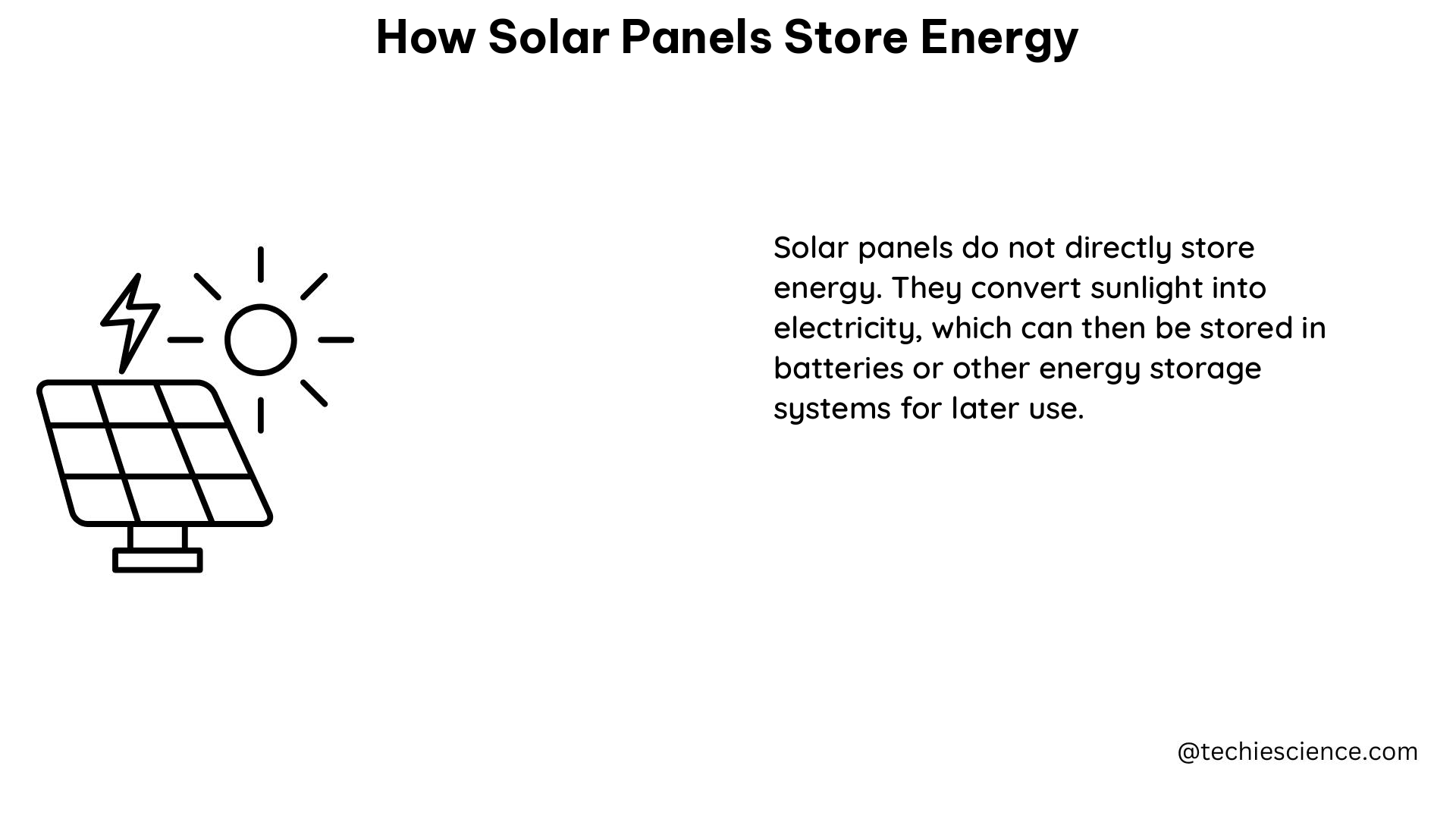Solar panels store energy through a process called photovoltaic (PV) conversion, where they convert sunlight into electrical energy. This energy can be stored in various ways, such as batteries, thermal storage, or mechanical storage. The most common storage technology used with solar power plants is electrochemical storage (batteries) with PV plants and thermal storage (fluids) with CSP plants.
Understanding Photovoltaic Conversion
The photovoltaic effect is the fundamental process that allows solar panels to convert sunlight into electrical energy. When sunlight hits the solar cells within a panel, the photons in the light excite the electrons in the semiconductor material, typically silicon. This creates an electrical potential difference, or voltage, across the cell. By connecting multiple solar cells in a panel, the voltage is increased, and the generated electricity can be used to power devices or stored for later use.
The efficiency of a solar panel in converting sunlight to electricity is typically between 15-22%, with high-end panels reaching up to 25% efficiency. The remaining energy is converted into heat, which can be managed through proper panel design and cooling techniques.
Solar Energy Storage Technologies

- Electrochemical Storage (Batteries):
- Lithium-ion batteries are the most common choice for residential solar energy storage due to their high energy density, long cycle life, and low maintenance costs.
- Residential solar energy storage systems typically range from 1 kWh to several tens of kWh in capacity.
- Small-scale batteries (1-5 kWh) are suitable for limited use during the evening or in case of power outages.
- Medium-sized batteries (5-20 kWh) provide more backup power and store a significant amount of excess solar energy.
- Larger residential or commercial batteries (>20 kWh) are suitable for larger homes, businesses, and properties with higher energy consumption.
-
The capacity of a solar battery determines how much energy it can store and discharge, while the battery’s power output (in kilowatts) determines how many appliances and for how long the battery can supply power during an outage or when the solar panels aren’t producing energy.
-
Thermal Storage:
- Concentrated Solar Power (CSP) plants often use thermal storage to store energy in the form of heat.
- Molten salts, such as a mixture of sodium nitrate and potassium nitrate, are commonly used as the thermal storage medium.
- The heat stored in the molten salts can be used to generate steam and drive turbines to produce electricity, even when the sun is not shining.
-
Thermal storage systems can provide several hours to several days of energy storage, depending on the size of the system and the storage medium used.
-
Mechanical Storage:
- Pumped-storage hydroelectricity is a form of mechanical energy storage used in some large-scale solar power plants.
- Excess solar energy is used to pump water from a lower reservoir to a higher reservoir, storing the potential energy of the water.
- When energy is needed, the water is released from the higher reservoir, passing through turbines to generate electricity.
- Pumped-storage hydroelectricity can provide long-term energy storage, with the ability to store energy for days or even weeks.
Factors to Consider When Choosing a Solar Battery
When selecting a solar battery for your home or business, consider the following factors:
- Energy Usage Patterns: Evaluate your daily and seasonal energy consumption patterns to determine the appropriate battery capacity.
- Solar Panel System Size: The size of your solar panel system will influence the amount of excess energy that needs to be stored.
- Backup Power Needs: Assess your specific requirements for backup power during outages or when the solar panels are not producing energy.
- Battery Capacity and Power Output: Ensure the battery’s capacity (in kWh) and power output (in kW) match your energy needs.
- Battery Efficiency and Cycle Life: Consider the battery’s efficiency in converting and storing energy, as well as its expected lifespan and number of charge/discharge cycles.
- Cost and Maintenance: Evaluate the upfront cost, ongoing maintenance requirements, and long-term operating expenses of the solar battery system.
By understanding the technical details of how solar panels store energy and the various storage technologies available, you can make an informed decision when choosing the right solar battery system for your needs.
References:
- Solar Integration: Solar Energy and Storage Basics
- Techno-economic analysis of different energy storage technologies in residential PV-battery systems
- The Solar Panel Battery is Your Sales Team’s Best Friend

The lambdageeks.com Core SME Team is a group of experienced subject matter experts from diverse scientific and technical fields including Physics, Chemistry, Technology,Electronics & Electrical Engineering, Automotive, Mechanical Engineering. Our team collaborates to create high-quality, well-researched articles on a wide range of science and technology topics for the lambdageeks.com website.
All Our Senior SME are having more than 7 Years of experience in the respective fields . They are either Working Industry Professionals or assocaited With different Universities. Refer Our Authors Page to get to know About our Core SMEs.